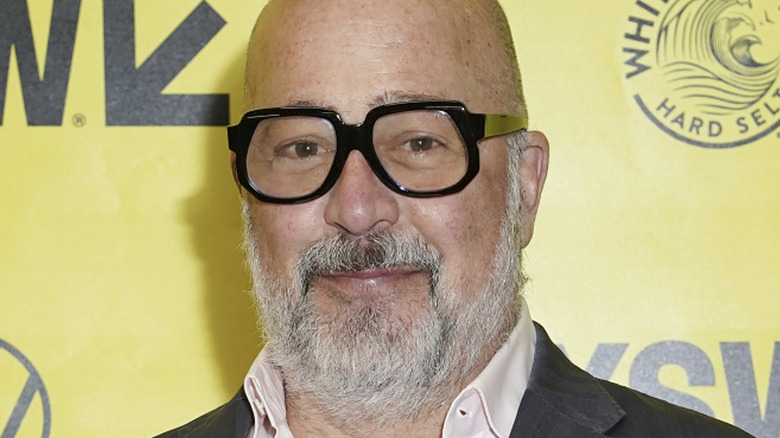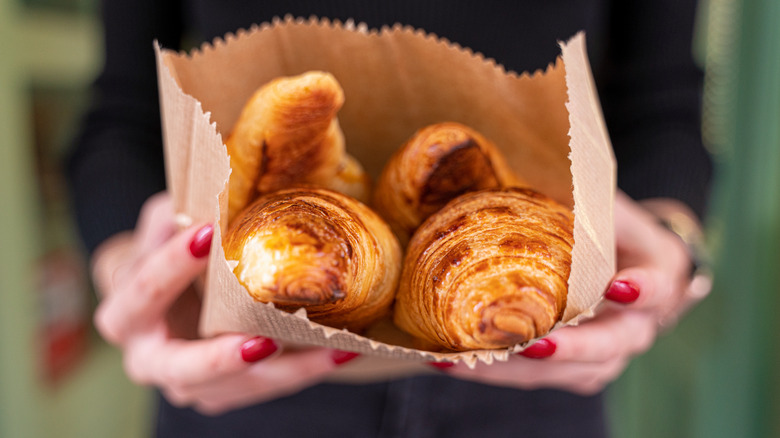Why Andrew Zimmern Refuses To Make Croissants
Chef Andrew Zimmern is a culinary figure who reached celebrity status for trying one unusual concoction after another on Travel Channel's "Bizarre Foods." Boasting an arsenal of try-at-home-worthy recipes, knife skills worth teaching, and relationships with industry titans like the Shake Shack founders (for whom he issues sentimental happy birthday wishes via Twitter), Zimmern has gained significant stature in the world of food.
But even with all that larger-than-life living, there is at least one very mainstream food Zimmern avoids making: the croissant. "The entire world of laminated pastry is something," he said in response to a viewer question on a recent YouTube channel "Ask Me Anything." "I don't do because it frustrates the sh** outta me."
He's not alone. Many of his peers in the highest chef echelons agree that making a great croissant is tough. Martha Stewart warned her YouTube audience in 2021 that the process is complicated and time consuming. Author and self-appointed baking fairy godmother Claire Saffitz told her YouTube audience around the same time that croissants are so tricky that despite her many notable career accomplishments, one of her greatest thrills is — you guessed it — successfully pulling out a sheet of perfectly golden, puffy, "gorgeous" (as she called them) croissants from the oven.
Here's a rundown on why croissants have such a reputation for being hard on even the best pastry chefs. Not surprisingly, it's the same reason a well-executed croissant tastes so good.
Everything croissant - from history to prep - is difficult
Croissants are problematic from the jump. According to croissant lore, they were borne out of an Austrian celebration when the Ottomans failed to take Vienna in 1683. That has been put into question, Smithsonian Magazine explained in 2015, by a poem given to Duke Leopold four hundred years earlier, a sonnet that waxed poetic about none other than a moon-shaped kipfel (the Austrian inspiration for what is now called a croissant).
How the pastry became French is also up for debate. As legend has it, Marie Antoinette missed her Vienna home and thusly brought her favorite pastry to France — and the kipfel became the croissant. That, too, is unlikely since croissants were never mentioned until the 1850's, after Austrian August Zang had set up shop in Paris and patented a steam oven that gave his kipfels a shiny gloss. Hello, croissants.
With all that complicated history, and chefs who bemoan its complicated preparation, what is the trick to great croissants? According to Institute of Culinary Education Director of Pastry and Research & Development, Chef Jurgen David, the trick is simple: there is none. "There's not really any special tricks," he said in the institute's "A Brief History of the Croissant."
It's a matter of having a calm, consistent hand when laminating (rolling butter and dough into sheets). The process takes patience and precision — which makes it flaky and delicious, but is also why Chef Andrew Zimmern steers clear of them altogether.

